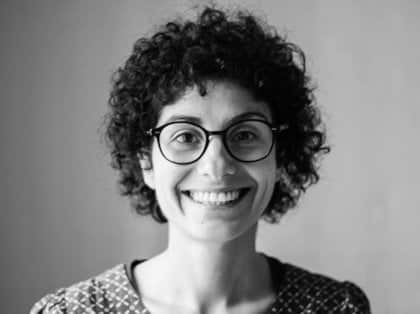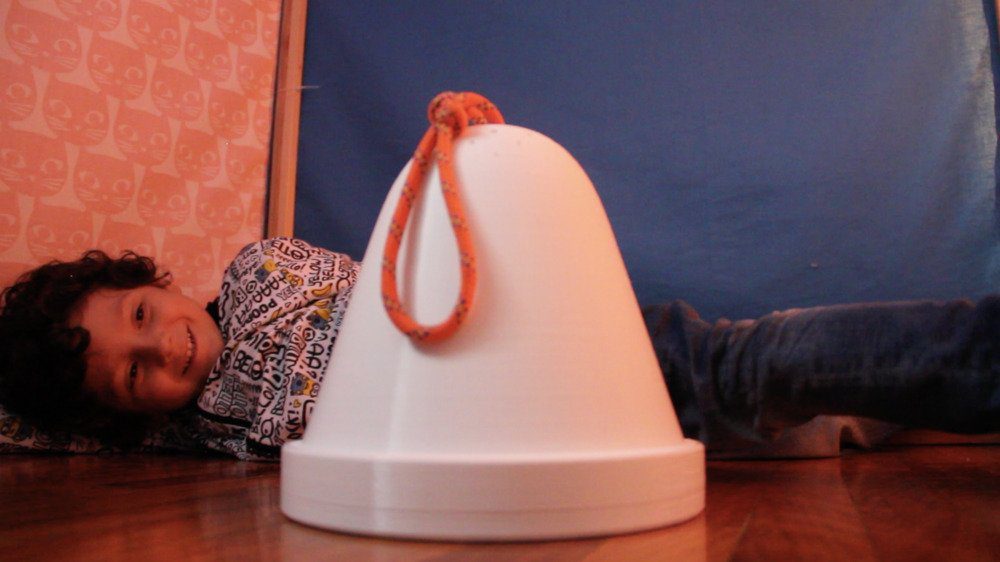The Storytellers Project is a delicious and ambitious technological and relational project conceived by Laura Boffi that involves several generations. On the contrary, a bridge: a platform for emotionally connecting young and old.
Imagine a magic bell, Storybell, which at a command transmits to children a fairy tale read at that precise moment by a local library. A gentle voice, an exciting story. The Storytellers Project is someone in flesh and blood who gives life to an object, to which to ask a question as old as the world: can you tell me a story?
Now stop imagining: The Storytellers Project is a real project, recently co-financed by the European Commission and conceived by Laura Boffi. Consultant, researcher and expert in interactive design and user experiences, Laura Boffi has a palmares as long as Job's beard, but shows the same amused and determined passion from the beginning. I interviewed her with great joy and curiosity.

Dear Laura, tell me a story: that of your project. How was The Storytellers Project born?
The idea of The Storytellers Project was born in 2016. My son was born recently and his grandmother started to read books for children immediately. It surprised me how both were involved in their readings, focused and intimate.
In the meantime, in that last period I had worked on some European projects on "active & healthy ageing" which had the aim of supporting elderly people to live independently also through the sensible use of technologies.
Through my research work which involved elderly people in a participatory way, I had developed a certain critical idea of my own on the assistive technology approach towards "ageing", sometimes stigmatizing, too tainted by preconceptions linked to aging and which, although not in any way the researchers' intentions, risked isolating the elderly even more.
My becoming a mother and the positive example of my son's grandmother opened me up to intergenerational relationships and I asked myself the question of how to support them.
What if instead of designing yet another home automation home for older people, would we give them the opportunity to get in touch with children naturally through reading?
Could relationships then develop beyond the "excuse" of history to read?
Could we prevent the emergence of stereotypes related to the elderly and aging by other generations?
This is how the idea of The Storytellers Project developed: a remote reading service in which a community of senior readers is trained by local libraries and then can remotely read to children who have borrowed Storybell robots from the library.

How do Storybells work?
Storybells are robotic bells that children borrow from the library and bring to their home. When the child wants a story told, he can ring the bell and a phone call arrives at that moment to all available readers, the storytellers. The first reader to answer the phone becomes the child's reader for that time. The child will listen and speak to the reader through the bell, the reader will use his phone.
Likewise, the reader can take the initiative and invite a child to read. The reader will have a mobile application through which to "invite" the children at that moment. The lit Storybells will begin to move and turn around the house in search of attention. The first child to lift their own from the ground and play it will accept that reader's invitation and the two will be able to talk to each other and start a reading session.
Communication through the Storybells is real-time and mutual.
The idea of giving a vital spark to an electronic device is romantic and moving. Beyond the aspects related to experimentation, do you think it is a sustainable paradigm?
Yes, it is because through my research with people I discover that for them it has meaning and natural in adoption and use. It is sustainable because it is human.
And being "human", I see that no kind of "concern" is perceived around the Storybell, which is in the end is still a kind of telepresence robot.
There was no friction between people's mental model and technological aspects.
Will the future see projects where the intelligence that makes the difference will be more human or artificial? What is the part we can do to mark a difference?
I can only answer you as a person and as a designer, I don't have a complete answer to your question.
As a person, I can always try to criticize myself and surround myself with new questions with an open mind.
As a designer, I can try to answer these questions in a creative way and design sensible behaviors for technologies, in such a way that they help me create the design answers that I set myself. My goal as a designer is not to design artificial intelligence for its own sake, nor to support human-machine interactions.
Lately I have finally become clearer that my projects are meant to support interactions between people and I use technology to do this. In my opinion it takes both human intelligence, by men, and the intelligence of machines, or behaviors designed by men for machines. It's a mix, but human intelligence must come and be exercised first of all by men.
Your approach to the profession is eclectic and proactive: do you already have a next project in mind?
I have one in progress, it's called Co-Drive (https:// carswithanintent.com/codrive), inspired by the possibilities of (semi) autonomous cars and, again, with the aim of supporting intergenerational relationships.
Robots (of various scales, from domestic to urban) to encourage (first) encounters between distant generations that would not meet in today's reality rich in age-related stigma and preconceptions.
Thank you! :)
Thanks to you, Laura. Today and tomorrow.
Historical courses and appeals
My friend Fabrizio Bartoloni encouraged me to return to an assonance that had crossed my mind. This project has an echo, an evolutionary and technological key to the romantic "Fables on the telephone" by Gianni Rodari, a fabulous project published in 1962 by Einaudi. Another extraordinary “manufacturer of the future”. (by the way, if you want to listen to them, or have children listen to them, here are some of them here)


